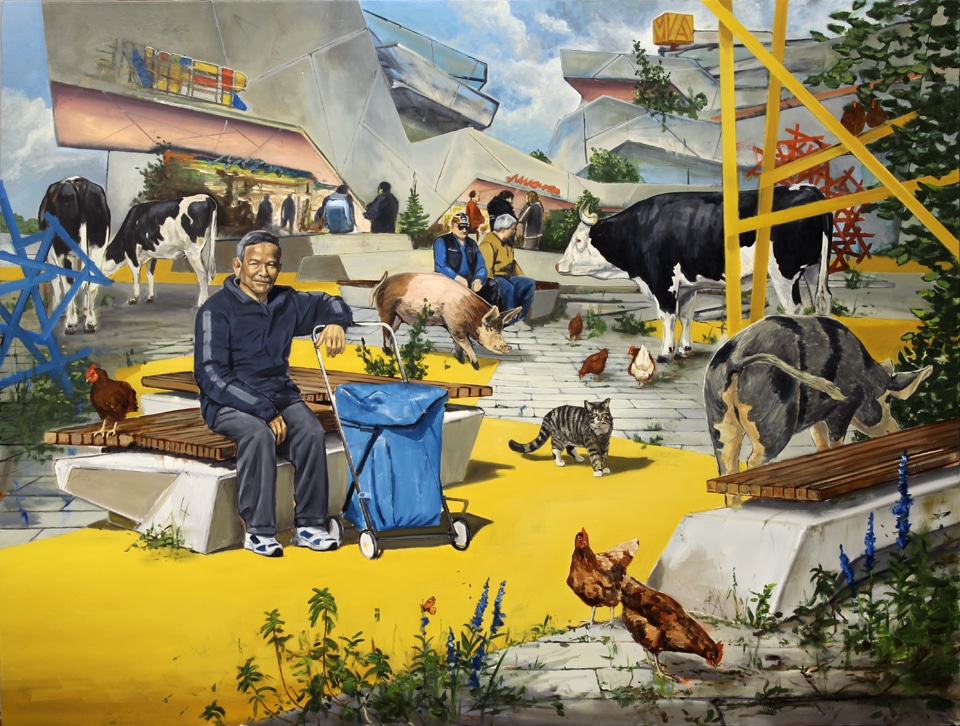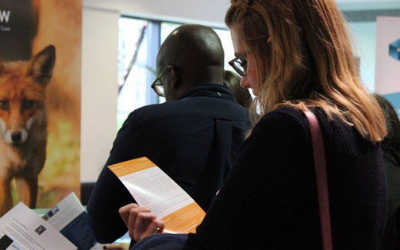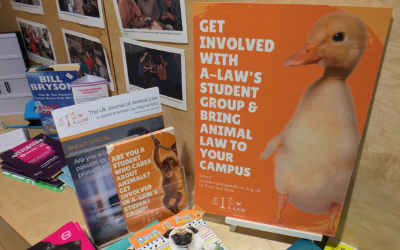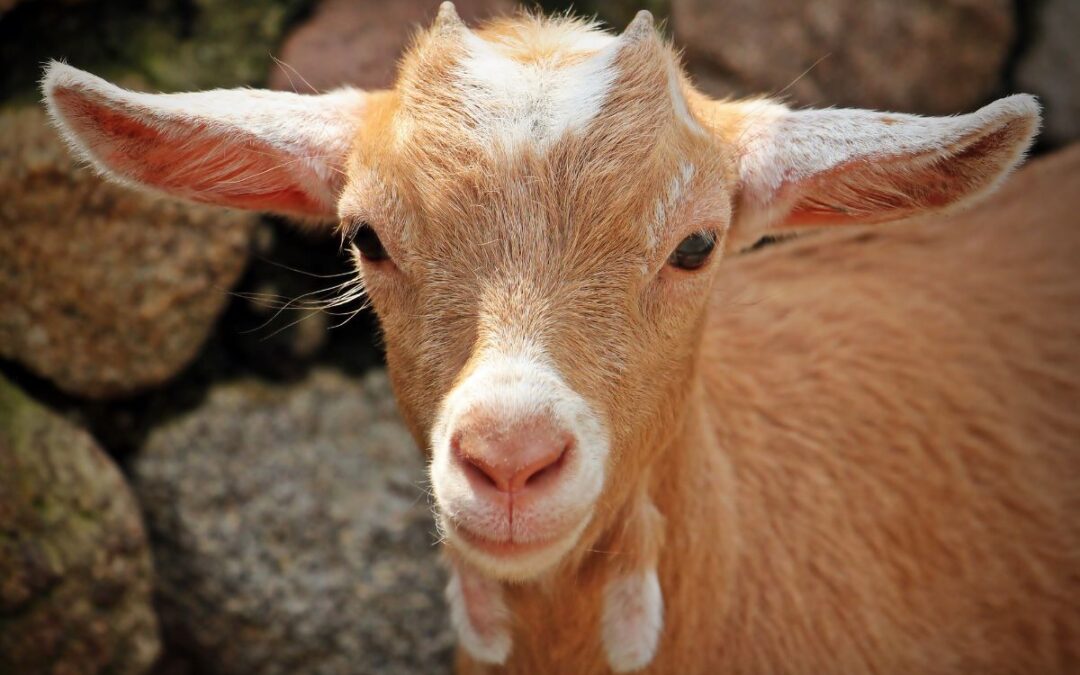By Pablo P. Castelló, PhD Candidate in Philosophy at Royal Holloway University of London
Philosopher Alasdair Cochrane has recently developed the notion of sentient rights, a system that would recognise all sentient animals as bearers of rights.i He interprets Peter Singer’s understanding of sentience as “the capacity for conscious experience,” and thus contends that this implies sentient animals “have a sense of ‘self’”, insofar as they can “experience the world and their place in it”.ii This also means such animals can suffer and experience pleasure. Cochrane seeks to reorient our political paradigm from a human rights’ political system to a sentient rights’ one, based upon two well-known ideas in moral and political philosophy: [1.] interests are “the necessary and sufficient conditions for the possession of rights,”iii and [2.] “sentience is the necessary and sufficient condition for the possession of interests”.iv
The main strength of Cochrane’s approach is that it regards sentience as a sufficient condition for animals to possess rights. Under Cochrane’s sentientist political system, many animals would have fundamental rights, such as the right not to be tortured,v necessitating the end of factory farms. Also, the notion of sentient rights can prove very productive in discursive and strategic ways. Many animal rights theorists and critical animal studies scholars have stated the need to build a discourse that goes beyond the human-animal divide, due to this divide’s delimiting who is inside the moral circle (the human) and who is outside (the animal).vi It thus structures our anthropocentric (human-centered) political system and society. In contrast, the concept of ‘sentient rights’ goes beyond the human-animal divide, which remains arguably unchallenged if we maintain the ‘human rights v. animal rights’ discourse.

Featured image: Courtesy of Harmut Kiewert
The main disadvantage of the sentientist approach, as argued by Cochrane, is in considering sentience as the necessary condition to be a right-holder, especially given Cochrane’s understanding of sentience. When one property is established as the locus of value, ethical dimensions other than the chosen one are overlooked. This problem is accentuated in Cochrane’s case because it is unclear whether some humans with cognitive disabilities can “have a sense of ‘self,’” or can “experience the world and their place in it.”vii viii Instead, I would propose to follow the lead of pluralist authors who have argued that there are dimensions other than sentience that are ethically valuable: vulnerability and dependency,ix agency, sociality, and relationality,x living embodied and emotional lives,xi and the differential uniqueness of individual human and non-human animals,xii among others.
In contrast to sentient rights, ‘animal rights’ connotes an openness to consider an array of dimensions that are ethically valuable. Perhaps the theory that best encapsulates this pluralist approach is Sue Donaldson and Will Kymlicka’s Zoopolis, in which they argue that animals should be valued by virtue of their being self-determining, vulnerable, social, sentient, relational, and dependent, for example. Thinking of animals in this holistic manner leads Donaldson and Kymlicka to argue not only for negative rights for animals but also, and importantly, for positive rights. Negative rights impose a duty on humans not to actualize a certain action upon beings or entities who hold such rights; negative rights tend to be associated with non-interference. For instance, the right not to be tortured imposes an obligation upon institutions and human individuals not to torture those beings who have such a right. Positive rights, by contrast, imply that the right-holder is entitled to be provided with a good or service such as health, shelter, and mobility. Positive rights are regarded as necessary to lead a flourishing life.
Donaldson and Kymlicka’s theory of animal rights pushes us to think about how we could transform our anthropocentric political institutions and democracies so that animals are protected and flourish. They explore what a human-animal democratic polis would look like, how animals could participate in such a polis, and what positive rights animals should hold. Crucially, Donaldson and Kymlicka’s position is based on regarding animals as political agents who have an intrinsic interest in liberty, and who therefore should be granted a right to liberty and political participation. While Cochrane agrees that some positive rights such as the right to health should be granted to animals, he does not think that animals have an intrinsic interest in liberty, and so he argues they have “no basic right to be liberated”.xiii
Cochrane’s concept of sentientist politics is productive in that it shatters one of the main axes sustaining the current anthropocentric political system: thehuman-animal divide. Furthermore, were sentient rights to be granted, the lives of many animals would improve and the intensive production of animals in factory farms would cease to exist (insofar as animals would have the fundamental right, for example, not to be tortured). In contrast, an animal rights’ approach fails to offer a new discourse to challenge our anthropocentric political and legal system in that it maintains thehuman-animal divide. However, animal rights’ theories, especially as understood by Donaldson and Kymlicka, can go beyond the sentientist paradigm, proposing a new political system and democracy that opens and amplifies the horizon of what is feasible, just, and good for both human and nonhuman animals.
Featured image: Courtesy of Harmut Kiewert.
Kiewert, Harmut (2019). Hill (250x380cm). This painting illustrates what a zoodemocratic system could look like. In the background, a factory farm of Tönnies Group is represented, this group is currently “a family company that is active at several levels of the food industry . . . In 2018 generated annual revenue of EUR 6.65 billion. The core business of the company, which was established in 1971, concerns the slaughter, butchering, processing and refining of pigs, sows and cattle” (Tönnies Group, 2020). Courtesy of Harmut Kiewert.
i See Sentientist Politics, 2018.
ii Cochrane 2018, 8.
iii Cochrane 2012, 17 [my emphasis]
iv Cochrane 2012, 18
v Cochrane 2012, 30
vi I italicise ‘the human’ and ‘the animal’ in order to make explicit that these concepts erase what is particular and unique about every human and non-human animal. Using ‘the’ attempts to denaturalise our use of ‘the human’ and ‘the animal’. On this see Wadiwel 2015, Taylor 2017, Ko and Ko 2017, Calarco 2020, Deckha 2021.
vii Cochrane 2018, 8.
viii See generally Sunaura Taylor’s Beasts of Burden for a critique of this. See also Vorhaus 2014 on the inner lives of mentally disabled persons
ix Kittay 2005, Deckha 2015, Taylor 2017
x Donaldson and Kymlicka 2011, Blattner et al. 2019
xi Donovan and Adams 2007, Adams and Gruen 2014
xii Wolfe 2003, Derrida 2008, Meijer 2019
xiii Cochrane 2012, 16







